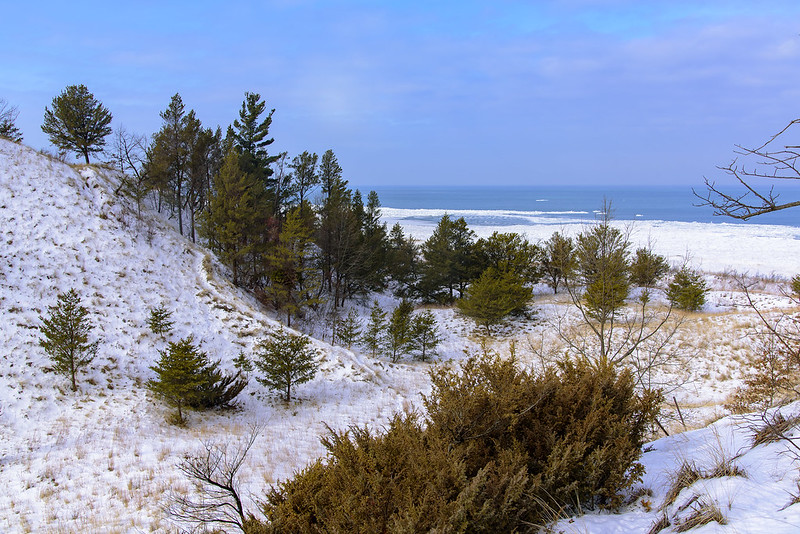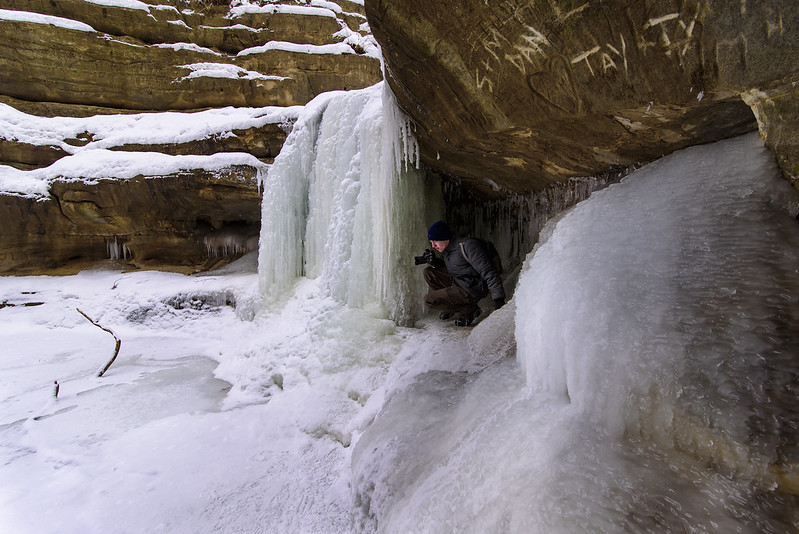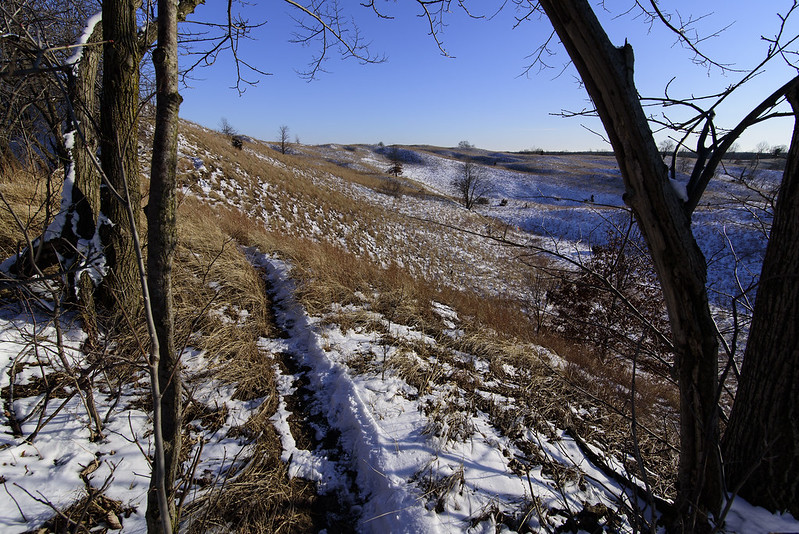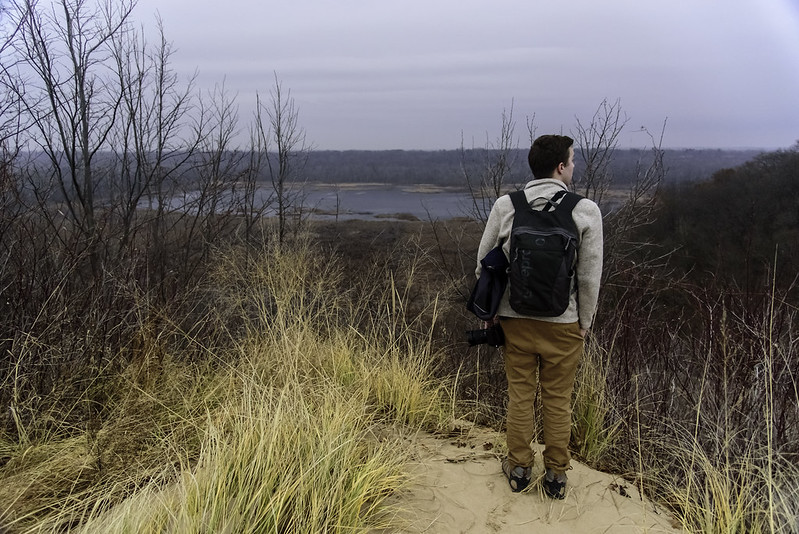
The weekend brought a little reprieve from the bitter cold weather, actually a big reprieve. An almost 70F degree rise in temperatures encouraged us to take a hike on the beach! The dunes along the beach to be exact. One of my favorite times to walk on the shore of Lake Michigan - it's like another world. The mounds of shelf ice extend hundreds of feet off shore, the snow covered dunes, and the lack of other people make winter a great time to wander the shore.
A hike through the woods to the ridge, then along the ridge to the nearest blowout brought us to this view. The coniferous trees stand out against the bright snow, and the drift ice is beginning to flow off shore, pushed by the winds from the south.

In several places, we were the first to walk through the snow-covered trails. While we are familiar with the trail, it's still difficult to see the narrow paths with several inches of snow on them. If you know what to look for, you can eventually begin to see the details that line the trail, and follow them.
Some of us had to run ahead to get to the beach faster, while others took their time.

















































